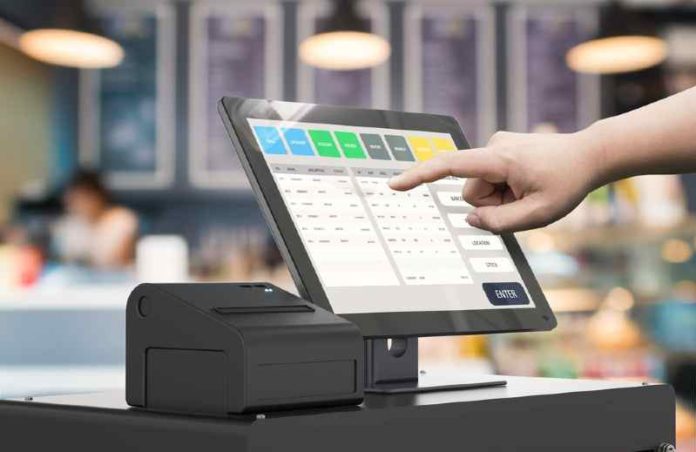As communities begin to slowly reopen in the coming weeks, small business owners and the consumers they serve will be entering unmarked territory. Navigating the new normal, people will be returning to their favorite salons, spas, groomers, tattoo shops, etc., with new apprehensions and expectations—especially when it comes to being in common areas and touching surfaces. Through learning about COVID-19, people have become highly aware of how payments and every other frequently touched item in a business may not be as sanitary as they once thought. The more touchpoints, the more risk—from POS systems and processing terminals to keyboards and pens.
Anticipating that consumer behaviors and perspectives may shift, small business owners must figure out how to put their customers at ease. They need a strategy to future-proof their operations and improve customer engagements, starting with core aspects of the shopping experience, such as checking out. Here are a few ways that small businesses can reduce the number of touches needed to complete a transaction.
Consider Contactless Payments
The best way to ease apprehension around touchpoints is to reduce the number of touches and time needed to complete a transaction. Most credit and debit cards issued in the last five years have NFC (near-field communication) or RFID (radio-frequency identification) capabilities embedded within the card, making contactless payments possible. Similarly, most payment terminals have NFC and RFID capabilities. These cards work similarly to Apple Pay or Google Wallet, given they don’t require a third-party device (e.g., a cell phone) to store the credit card information; “tap and go” payment methods use the card itself.
If customers are new to, but interested in, contactless payments, small businesses can write out guidelines and showcase them by the payment terminal or on their website and social media pages. Customers may have questions, such as whether tap-and-go payments are as secure as EMV chip payments. The answer is yes; similar to chip transactions, the contactless payment is accompanied by a one-time use code that secures the payment data.
Disable Signature Functions
Thanks to the increased security in the chip and tap payment cards, most major card brands removed the requirement for transaction signatures in 2018 in the U.S. and Canada. Because it is no longer required, there are no fees related to processing a transaction without the signature, removing that barrier for customers. That said, many processing terminals and POS systems still have the signature prompt as a default setting. Small businesses can contact their card processor to adjust those settings, which will reduce the contact needed to complete a transaction. Clients will appreciate saving a step, both for sake of time and safety.
While this practice is easy for retail-only transactions, small businesses may be skeptical about how it extends to tipping. In some cases, it may make sense to continue requesting signatures so patrons can discreetly add a post-transaction tip. Otherwise, small businesses can set up integrations that “prompt for a tip” before the purchaser approves the amount. With this system, the full transaction amount is charged at once (instead of a tip adjustment after the fact), eliminating the need for a signature as proof of the adjustment.
Set up Recurring Billing
Small businesses that use business management software can sell recurring client memberships to their customers. These memberships are first and foremost an effective way to recognize customer loyalty with a small discount on recurring services. Additionally, by charging their card automatically every month—without touching the card or terminal after the initial setup—it can make payments completely touchless. If small businesses don’t offer memberships, they can still integrate their business management software with payment processing systems that allow shops to store card information for future visits. Being able to securely store data allows small businesses to facilitate quicker, touch-free transactions for their regular customers on future visits.
Communicate Your Plans to Customers
If small businesses are taking precautions to keep their customers safe and give them peace of mind, they should make those practices known. Consider email communications that highlight the reopening of the business and the availability of contactless payments. These can be paired with automated text messages to regular customers, posts on social media and landing pages on the business’ website. In addition to reassuring loyal customers, small businesses want to do everything they can do set themselves apart to prospects, too, as storefronts reopen.
Moving forward, the first priority for everyone is staying safe. Amidst this constant consideration, businesses must also prepare for the future. Owners should be considering how and when their clients will want to come back and how they can best adapt to what might be a new reality. Payment methods is just one example—but an important one.
Jeff Dickerson is the CEO of DaySmart Software – a technology company that specializes in the design, development and support of simple, powerful, scheduling and resource management solutions for those in the salon, spa, pet and tattoo industries. Today DaySmart offers industry-specific business management software platforms – Salon Iris, 123Pet, InkBook and Orchid – that are leveraged by hundreds of thousands of global users each day.
Payments stock photo by Phonlamai Photo/Shutterstock







